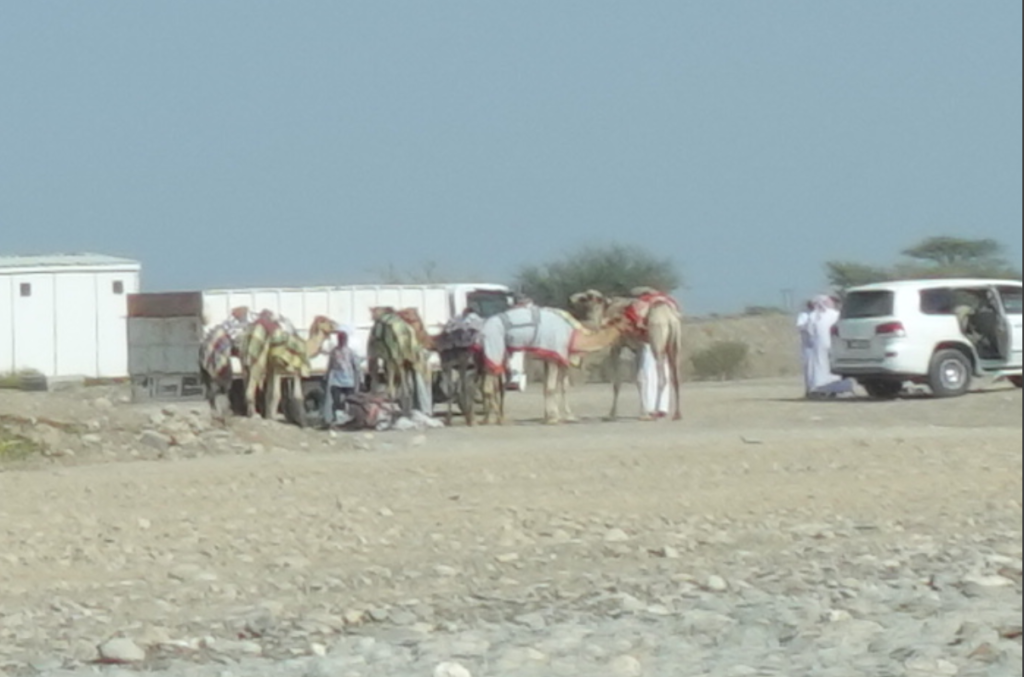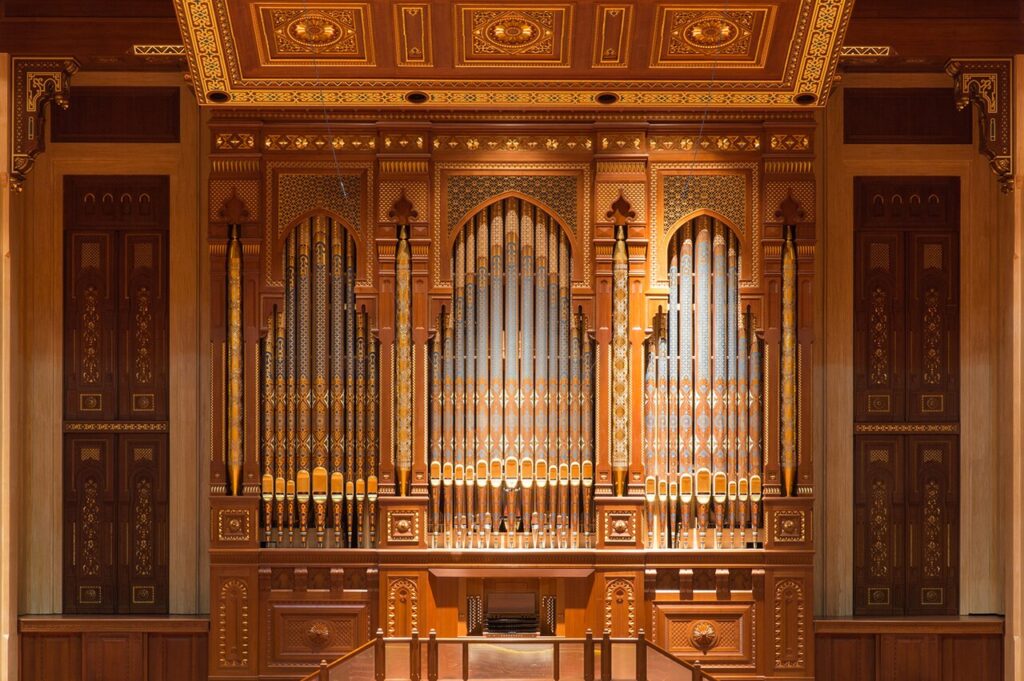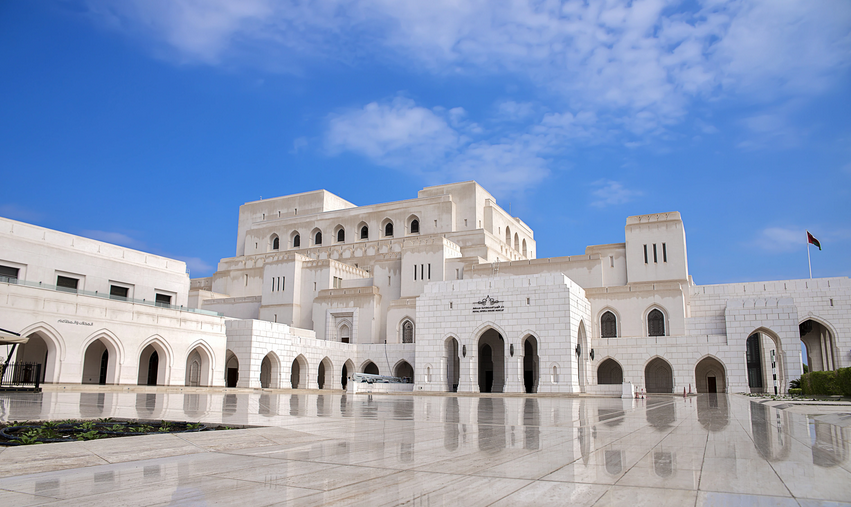Camels, opera
We read in the paper at breakfast that it was the final day of an important camel racing tournament held just outside of Muscat. Scouring the website of the Oman Camel Racing Federation failed to turn up any sort of event schedule, so we just got in the car and drove out to the grounds– until the very final turn, where we realized that 4 wheel drive was more or less a requirement to make it to the stadium; the rented Suzuki Dzire was not going to do it.

So we turned around, and this was as close as we got to any camels:

After the outlawing of child jockeys, robot jockeys are now the standard in the UAE; I’m not sure about Oman, however, so cannot report back for obvious reasons. (News reports on the events seem to report the name of the camel and the owner, but not the jockey; so the jockey seems to be at least considered a nonperson, which is either benign or sinister depending on whether or not they actually are.)
So we went to the opera house instead. The Royal Opera House Muscat opened in 2011. If a survey of history has ever left you with the nagging feeling that democracy is good for many things but impressive buildings is not one of them, the opera house of Muscat would not do anything to counterindicate your hypothesis. It’s the kind of place that doesn’t seem possible to build in the 21st century; in the context of physical infrastructure for Western classical music, in scale it seems like the kind of place must have been build hundreds of years ago and involved a Habsburg. Which is of course more or less the correct context within which to understand it; it exists because Sultan Qaboos was a personal fan of the arts, and is both a performing arts space and a visible demonstration to foreign investors that Oman’s ability to position itself on the world stage. Sultan Qaboos’ personal collection of historical instruments is displayed in the lobby, which includes a few ceramic serpents as well as brass and string instruments, a glass flute, and my personal favourite, this little dude:

This is a pochette, an instrument I had never heard of apparently developed to allow dance masters to have an instrument handy while teaching steps and carry it around in their, well, pochette.
My pictures don’t exactly do the architecture justice, so here are some other ones:

By Khalidalbusaidi - Own work, CC BY-SA 4.0, https://commons.wikimedia.org/w/index.php?curid=51531638

By Khalidalbusaidi - Own work, CC BY-SA 4.0, https://commons.wikimedia.org/w/index.php?curid=51560838
